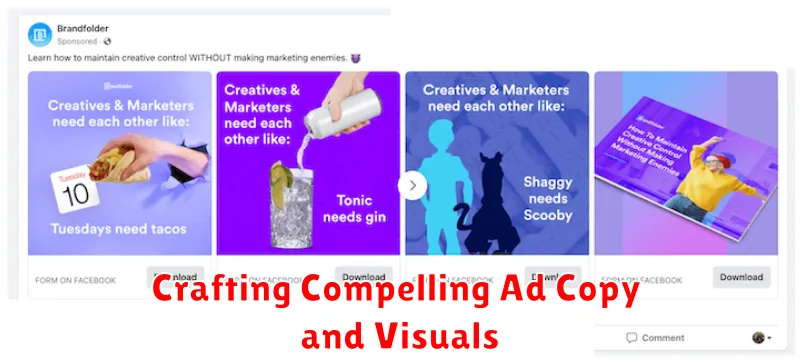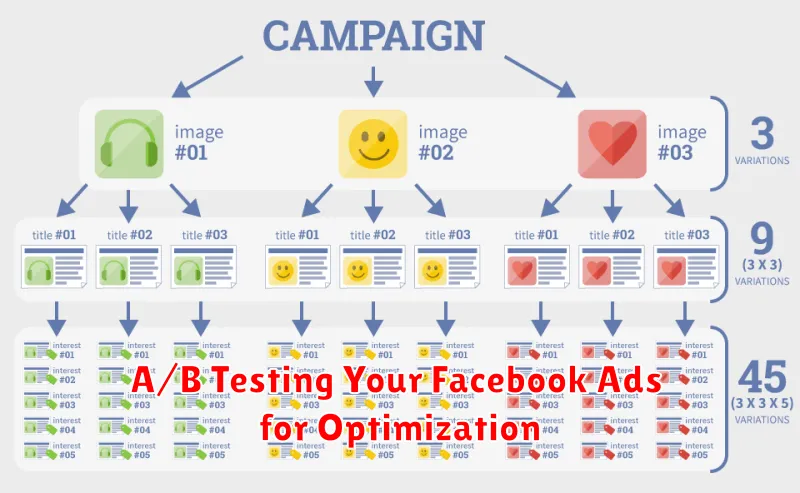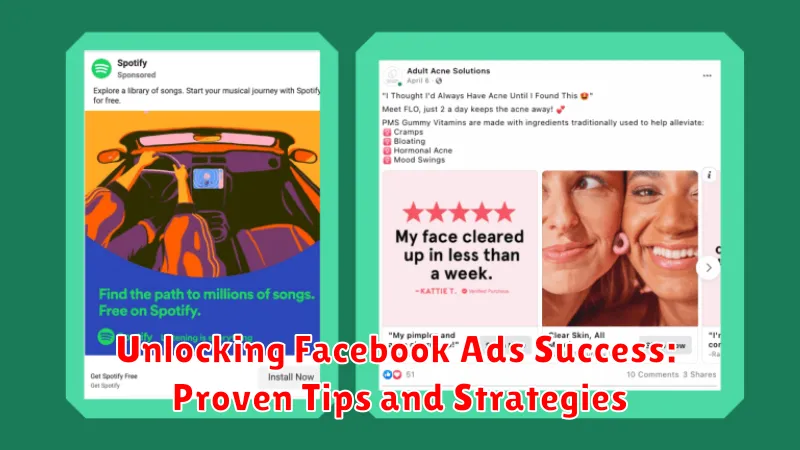Are you struggling to see a return on investment from your Facebook Ads campaigns? Do you feel like you’re throwing money away without achieving your marketing goals? You’re not alone. Many businesses find navigating the complexities of Facebook Ads challenging. This article, “Unlocking Facebook Ads Success: Proven Tips and Strategies,” is designed to provide you with the actionable insights you need to transform your campaigns and achieve Facebook Ads success. We’ll explore proven tips and strategies, from targeting the right audience and crafting compelling ad copy to optimizing your bidding strategies and analyzing campaign performance. Learn how to leverage the power of Facebook Ads to drive conversions, increase brand awareness, and ultimately, grow your business.
Within this comprehensive guide, we’ll delve into the core components of successful Facebook Ads campaigns. We’ll cover essential topics such as understanding your target audience, defining clear campaign objectives, creating high-performing ad creatives, and utilizing Facebook’s robust targeting options. Whether you’re a seasoned marketer looking to refine your strategies or a beginner just starting out, this article will empower you with the knowledge and tools necessary to unlock the true potential of Facebook Ads and achieve measurable success. Let’s embark on this journey to Facebook Ads mastery together.
Defining Your Target Audience and Objectives
Before launching any Facebook ad campaign, it’s crucial to define your target audience and objectives. Understanding who you’re trying to reach and what you want to achieve will guide your entire strategy.
Start by identifying your ideal customer. Consider demographics like age, gender, location, interests, and behaviors. The more specific you are, the more effectively you can tailor your ads.
Next, clearly define your campaign objectives. Are you aiming to increase brand awareness, drive website traffic, generate leads, or boost sales? A well-defined objective provides a measurable goal for your campaign.
By aligning your target audience with your campaign objectives, you create a focused and effective advertising strategy that maximizes your return on investment.
Crafting Compelling Ad Copy and Visuals

Engaging ad copy and eye-catching visuals are crucial for successful Facebook ad campaigns. Your visuals should immediately grab attention and be relevant to your target audience.
Start with a strong headline that clearly communicates your value proposition. Keep your copy concise and focused on the benefits of your product or service. Use strong calls to action, such as “Shop Now,” “Learn More,” or “Sign Up Today,” to encourage immediate engagement.
Consider incorporating social proof, like testimonials or user reviews, to build trust and credibility. High-quality images or videos are essential. Ensure your visuals are professional, visually appealing, and aligned with your brand identity.
Choosing the Right Facebook Ad Format
Selecting the appropriate ad format is crucial for maximizing your campaign’s effectiveness. Facebook offers a variety of formats, each catering to different marketing objectives and user experiences. Understanding these formats and their strengths is key to reaching your target audience effectively.
Image Ads are a simple yet powerful format, ideal for showcasing your product or brand visually. Focus on high-quality images and concise messaging to capture attention.
Video Ads offer a dynamic way to engage users with sight, sound, and motion. They are particularly effective for storytelling and product demonstrations.
Carousel Ads allow you to display multiple images or videos within a single ad unit, giving users more to explore. This format is great for showcasing different product features, variations, or promotions.
Collection Ads create an immersive shopping experience directly within the Facebook platform. Users can browse your products and make purchases without leaving the app.
Consider your campaign goals, target audience, and the nature of your product or service when selecting a format. Experimentation is encouraged to determine which formats resonate most with your target demographic.
Setting a Realistic Budget and Bidding Strategy
Budget allocation is crucial for successful Facebook ad campaigns. Start by defining a total budget that aligns with your marketing goals and resources. Then, divide this budget across your campaigns and ad sets, prioritizing those expected to yield the highest return.
Facebook offers several bidding strategies to optimize your ad delivery. Consider your campaign objectives when choosing a bidding strategy. If your goal is brand awareness, you might choose Reach or Impressions. For conversions, consider Cost per Click (CPC), Cost per Action (CPA), or Value Optimization.
It’s essential to monitor your spending closely. Facebook provides real-time data on budget pacing, allowing you to adjust your bids and budget allocation as needed to maximize your campaign’s effectiveness and avoid overspending. Start with a smaller budget to test your campaigns and gather data before scaling up your investment.
Utilizing Facebook’s Targeting Options
Facebook offers a robust suite of targeting options, allowing you to pinpoint the ideal audience for your advertisements. Effective utilization of these options is crucial for maximizing your return on investment and reaching the right customers.
Demographic targeting allows you to reach users based on age, gender, location, education, and other factors. This ensures your ads are shown to users who are statistically more likely to be interested in your product or service.
Interest-based targeting lets you connect with users based on their declared interests, activities, and pages they follow. This allows you to reach individuals who have demonstrated an affinity for products or services related to your offering.
Behavioral targeting leverages user actions and patterns, such as purchase history or device usage, to target individuals exhibiting specific behaviors relevant to your business.
Custom audiences enable you to re-engage with individuals who have already interacted with your business, such as website visitors or existing customers. This provides a highly effective method for retargeting and nurturing leads.
Lookalike audiences expand your reach by identifying new users who share similar characteristics with your existing customer base. This helps discover potential customers who are likely to be receptive to your message.
Monitoring and Analyzing Your Ad Performance
Consistent monitoring of your Facebook ad campaigns is crucial for maximizing your return on investment. Facebook Ads Manager provides a comprehensive dashboard to track key performance indicators (KPIs).
Focus on metrics relevant to your objectives. For brand awareness campaigns, monitor reach, impressions, and engagement. If your goal is driving conversions, prioritize metrics like website clicks, conversion rate, and cost per conversion.
Regular analysis helps identify trends and patterns. Are certain demographics responding better to your ads? Are specific ad placements outperforming others? Answering these questions allows for data-driven optimization.
Use the insights gained to refine your targeting, adjust your bidding strategy, and improve your ad creatives. Consistent analysis empowers you to allocate your budget effectively and achieve optimal results.
A/B Testing Your Facebook Ads for Optimization

A/B testing, also known as split testing, is crucial for maximizing your Facebook ad campaign’s effectiveness. This process involves creating two slightly different versions of your ad (version A and version B) and running them simultaneously to determine which performs better.
Identify a single variable to test. Focus on one element at a time, such as the ad image, headline, call to action, or even target audience. Testing multiple variables concurrently makes it difficult to isolate the impact of each change.
Create your variations. With your variable chosen, develop two distinct versions of your ad. Keep the changes subtle and focused on the chosen element. For example, if you’re testing images, use two different images but maintain the same headline and ad copy.
Define your key metric. Decide which metric is most important for your campaign’s success, such as click-through rate (CTR), conversion rate, or cost per conversion. This metric will determine the “winning” variation.
Run your test. Allow Facebook’s ad delivery system to distribute your ad variations to a similar audience segment. Ensure your test runs long enough to gather statistically significant data.
Analyze the results. Once your test concludes, review the performance of each variation based on your chosen key metric. The variation with the better performance is your winner.
Implement the winning variation. After identifying the winning ad, pause the losing variation and scale your campaign using the higher-performing version.
Iterate and continue testing. A/B testing is an ongoing process. Continue to test different variables to refine your ads and improve performance over time.
Staying Up-to-Date with Facebook’s Advertising Policies
Facebook’s advertising policies are constantly evolving. Staying informed about these changes is crucial for maintaining successful campaigns and avoiding penalties. Ignoring updates can lead to rejected ads, suspended accounts, and wasted ad spend.
Regularly review Facebook’s official advertising policies documentation. Subscribe to their business blog and newsletters for timely updates and announcements. This proactive approach ensures your campaigns remain compliant and effective.
Pay close attention to policies regarding prohibited content, advertising standards, and data usage. Understanding these key areas will help you create compliant ads and target your audience effectively within Facebook’s guidelines.
Be aware of updates related to political advertising, sensitive topics, and targeting restrictions. These areas are subject to frequent changes and require careful monitoring to ensure your campaigns remain compliant.

